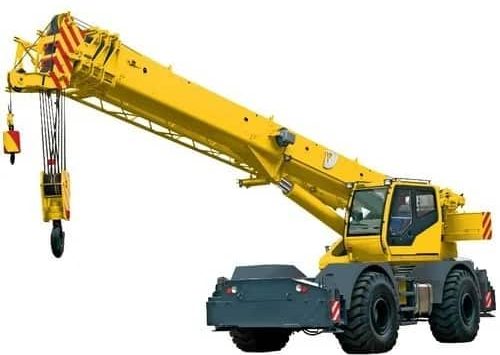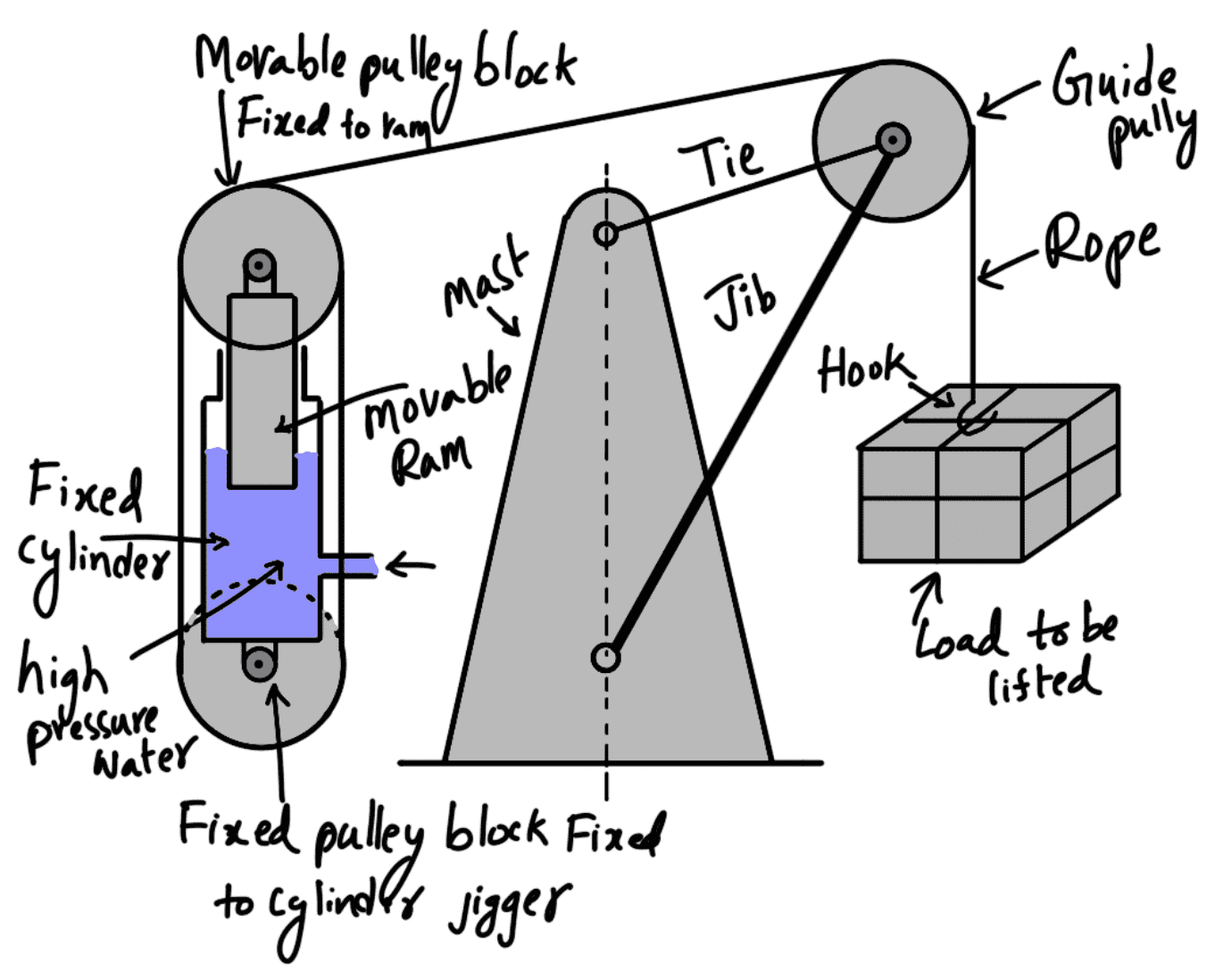A Hydraulic crane is a heavy-duty equipment used for raising or transferring heavy loads. It is widely used in workshops, warehouses and dock sidings. Let us discuss how a Hydraulic Crane works.

Fluid Systems
A fluid system is defined as a device in which power is transmitted with the help of a fluid which may be liquid (water or oil) or a gas (air) under pressure. Most of these devices are based on the principles of fluid statics and fluid kinematics. Following are the different devices that come under the Fluid systems.
- The hydraulic press
- The hydraulic accumulator
- The hydraulic intensifier
- The hydraulic Ram
- The hydraulic Lift
- The hydraulic Crane
- The fluid or hydraulic coupling
- The fluid or hydraulic torque converter
- The Air Lift pump
- The gear-wheel pump
Hydraulic Crane
A Hydraulic crane is a heavy-duty equipment used for raising or transferring heavy loads. It is widely used in workshops, warehouses and dock sidings.

- A hydraulic crane consists of a mast, tie, jib, guide pulley and a jigger.
- The jib and tie are attached to the mast. The jib can be raised or lowered in order to decrease or increase the radius of action of the crane.
- The mast along with the jib can revolve about a vertical axis and thus the load attached to the rope can be transferred to any place within the area of the crane’s action.
- The jigger, which consists of a movable ram sliding in a fixed cylinder, is used for lifting or lowering heavy loads.
- One end of the ram is in contact with water and the other end is connected to a set of movable pulley blocks.
- Another pulley block, called the fixed pulley block is attached to the fixed cylinder.
- The pulley block, attached to the ram, moves up and down while the pulley block, attached to the fixed cylinder, is not having any movement.
- A wire rope, one end of which is fixed to a movable pulley (which is attached to the sliding ram) is taken round all the pulleys of the two sets of pulleys and finally passes over the guide pulley, attached to the jib as shown in the following figure.
- The other end of the rope is provided with a hook, for suspending the load.

- For lifting the load by the crane, the water under high pressure is admitted into the cylinder of the jigger.
- This water forces the sliding ram to move vertically up.
- Due to the movement of the ram in the vertically up direction, the movable pulley block attached to the ram also moves upward.
- This increases the distance between two pulley blocks and hence the wire passing over the guide pulley is pulled by the jigger. This raises the load attached to the hook.
This is all about how the Hydraulic Crane works.
Example Problem on Hydraulic Crane Efficiency
Problem Statement: Find the efficiency of a hydraulic crane. which is supplied 300 litres of water under a pressure of 60 N/cm2 for lifting a weight of 12 KN through a height of 11 m.
Answer:
Given data
Water supplied, Q = 300 litres = 0.30 m3
Pressure, p = 60 N/cm2 = 60 × 104N/m2
Weight lifted, W = 12kN = 12 × 1000 = 12000N
Height, h = 11 m
The output of the crane = Weight lifted × Height through which weight is lifted = W × h = 12000 × 11 Nm
The input of the crane = Energy supplied by the water
= Work done by water on the ram
= Force on ram × Distance moved by ram
= Pressure × Area of ram × Stroke of ram
= p × A × L
= 60 × 104 × Volume displaced.
= 60 × 104 × 0.30
= 18 × 104 Nm
The efficiency of the crane = Output / Input = (12000 × 11) / 18 × 104 = 0.7333 = 73.33%
The efficiency of a hydraulic crane is 73.33%.
This is all about hydraulic cranes and how we can calculate the Hydraulic crane’s efficiency. Let us know what you think about this article in the comment section below.

Leave a Reply